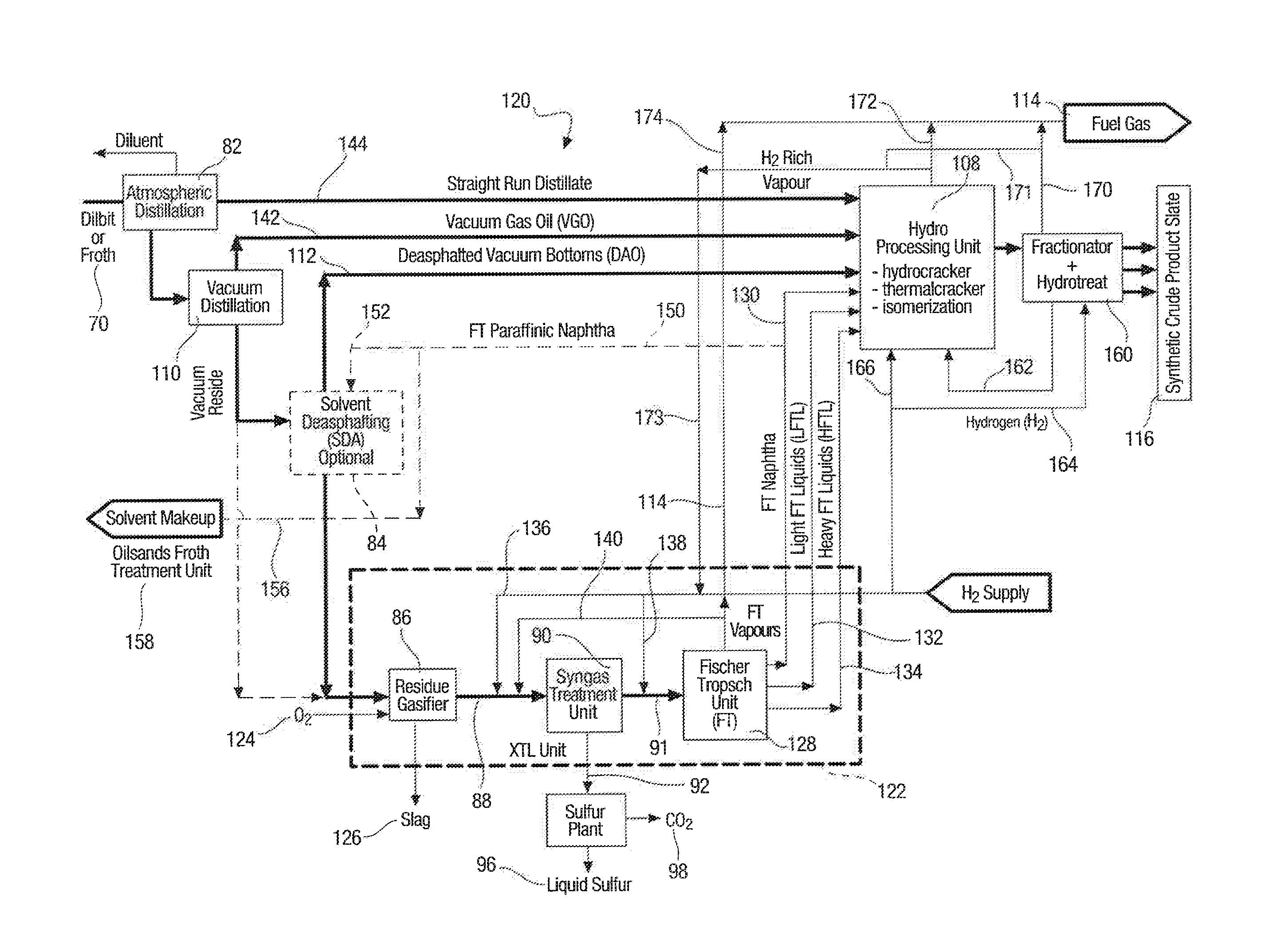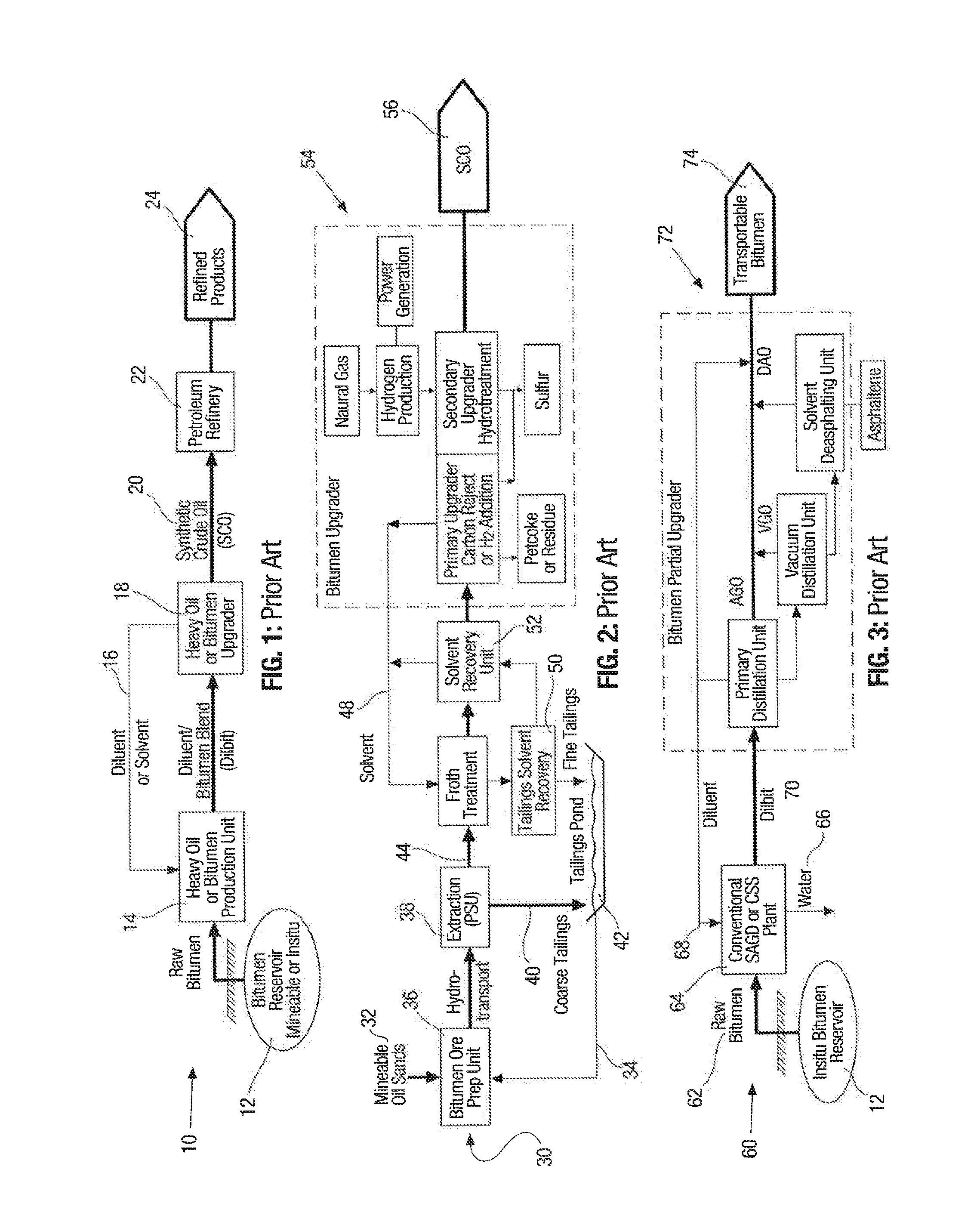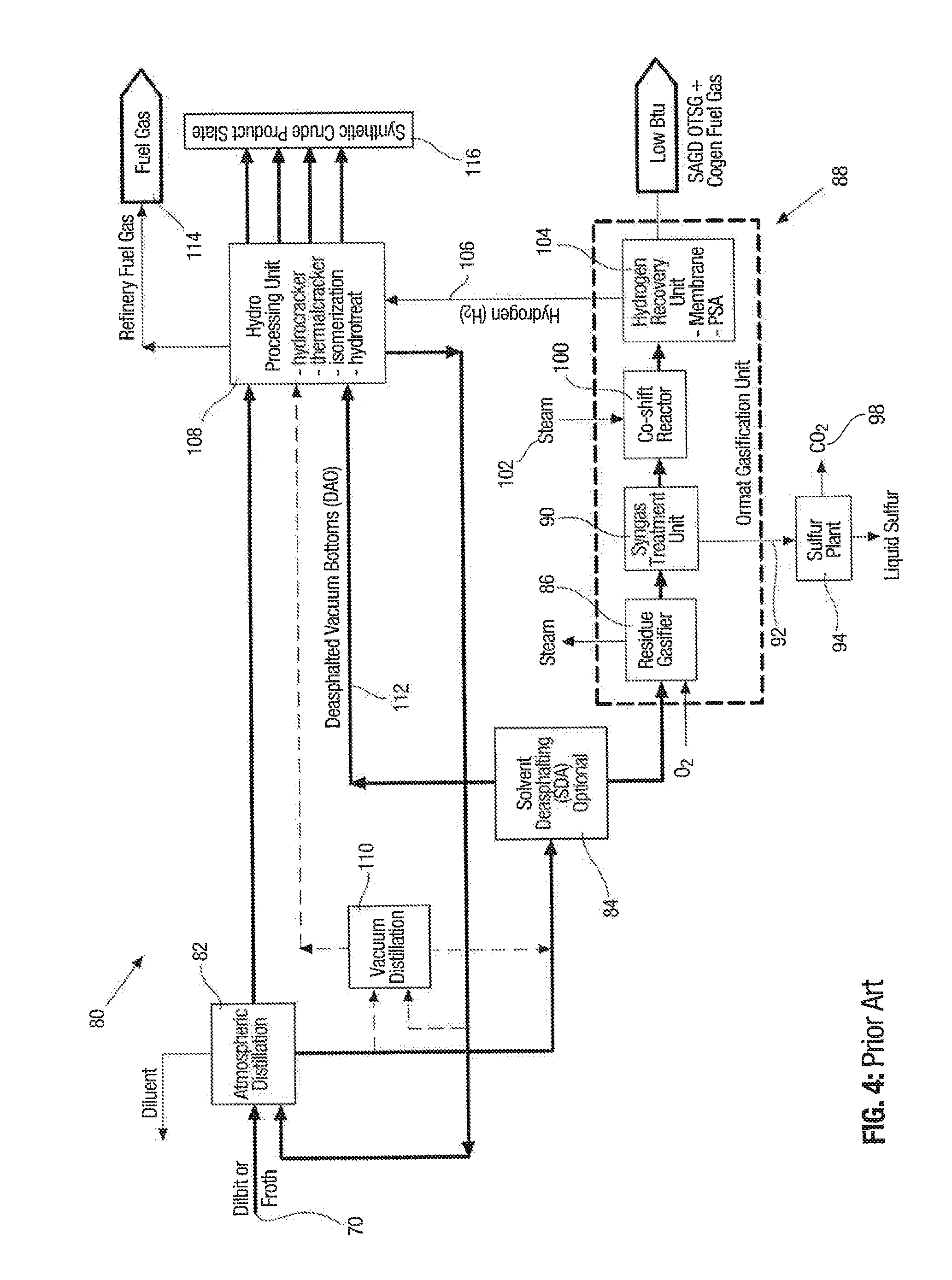Partial upgrading process for heavy oil and bitumen
a technology of heavy oil and upgrading process, which is applied in the direction of gas purification with selectively adsorption solids, inorganic chemistry, liquid washing, etc., can solve the problems of easy conversion, undesirable waste material, and fraction must be removed
- Summary
- Abstract
- Description
- Claims
- Application Information
AI Technical Summary
Benefits of technology
Problems solved by technology
Method used
Image
Examples
Embodiment Construction
[0096]Referring now to FIG. 1, shown is a first embodiment of a bitumen production flow diagram based on the prior art. The overall process is denoted by 10. In the process, the heavy oil or bitumen source 12 may comprise a bitumen reservoir which may be minable or in situ. Generally speaking, the bitumen then may be transported to a heavy oil or bitumen production unit 14 into which diluent or solvent may be introduced via line 16 from a heavy oil or bitumen upgrader 18. The diluent or solvent can comprise any suitable material well known to those skilled in the art such as suitable liquid alkanes as an example. Once the diluent is introduced via line 16 into the production unit 14, the result is a mobilizable bitumen blend (dilbit). Once the dilbit or diluted bitumen blend is processed in the upgrader 18, the so formed synthetic crude, globally denoted by 20 is then treated in a petroleum refinery 22 where subsequently refined products are formulated and with the refined products ...
PUM
| Property | Measurement | Unit |
|---|---|---|
| Fraction | aaaaa | aaaaa |
| Percent by volume | aaaaa | aaaaa |
| Boiling point | aaaaa | aaaaa |
Abstract
Description
Claims
Application Information
 Login to View More
Login to View More - R&D
- Intellectual Property
- Life Sciences
- Materials
- Tech Scout
- Unparalleled Data Quality
- Higher Quality Content
- 60% Fewer Hallucinations
Browse by: Latest US Patents, China's latest patents, Technical Efficacy Thesaurus, Application Domain, Technology Topic, Popular Technical Reports.
© 2025 PatSnap. All rights reserved.Legal|Privacy policy|Modern Slavery Act Transparency Statement|Sitemap|About US| Contact US: help@patsnap.com



